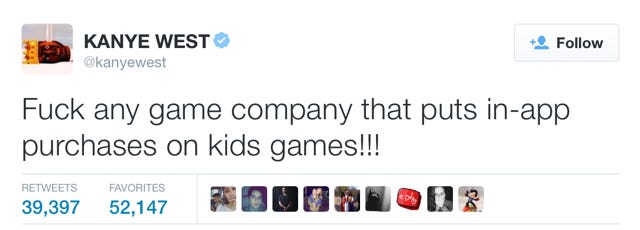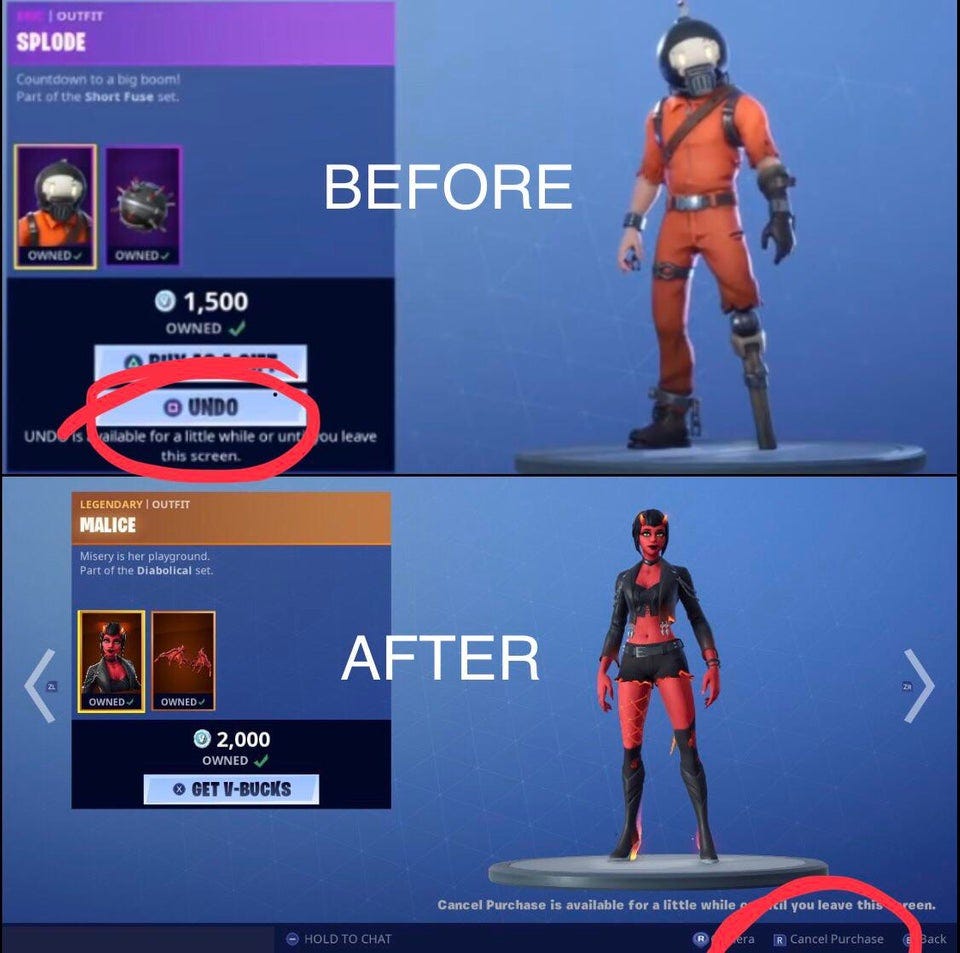Factual Dispatch #28: Surprise Mechanics & Kiddie Slots
Over the past decade, free-to-play (F2P, or freemium) games have grown in popularity across cell phones and PC, with these mechanics, sometimes also named “loot boxes,” have arrived on consoles. These systems can be as harmless as paying a buck for new skin or golden wrench to show to your friends, or as destructive as people spending $16,000 on a “free” game in a single year. (Editor’s Note: our author plays FFBE)
About a month ago, EA and Epic Games testified to the UK Parliament's Digital, Culture, Media and Sport Committee on the topic of loot boxes. Instead of acknowledging the issues that have cropped up with undisclosed gambling in games marketed to kids, or discussing efforts they’ve taken to help fight the problem, EA referred to the gambling as “surprise mechanics” and that they were “quite ethical and fun.” For everyone who just heard “very legal and very cool,” here’s some more context.
As of last month, Candy Crush had ~270 million players, of which 9 million played the game more than 3 hours a day, and 432,000 played it for more than 6 hours a day. That tier of consumption is matched only by slot jockeys, video streamers, and people functionally dependent on something. What you may not know about Candy Crush, is that it’s not a puzzle game, it’s actually an RPG (role playing game) + F2P mechanics.
There is a secondary set of XP & levels that players can earn, slamming their faces into the same level over & over again, that eventually modifies the goal score, which presses the player to maybe buy an item that will help you beat it. OverthinkingIt explains:
See, Candy Crush was presented to me as a game of skill and chance, where each round was an opportunity to win or lose. And because losing is always frustrating, it made me frustrated. But once I realized that, by losing over and over again, I was making it easier to win further down the road, I realized that Candy Crush was never a game of skill after all. No, it’s an entirely different kind of game.
Candy Crush is a JRPG. I wasn’t losing. I was grinding. The mechanism isn’t exactly the same, of course. My character doesn’t have stats to advance — I don’t even really have a character! But the basic principle of engaging a in repetitive behavior for hours and hours until you can finally make some progress, is exactly the same.
The biggest difference between F2P games and slot machines is regulation. Right now, a gaming agent in Vegas can order any casino on the Strip to pop the hood any of the quadrillion slot machines in Vegas, to verify the odds being advertised are actually being delivered. There is no equivalent gaming agency to monitor F2P mechanics, online marketplaces that convert real money into in-game items, or what UX designers refer to as “Dark Patterns.” And boy, is it way more malevolent than the Variable Interval Reward system you might have learned about in college psych.
Those who have known me for years have heard me refer to this as “Sith Psychology.” For example, in the above image, you can see the “Undo” button has been replaced by a “buy” button, and the cancel as been shifted down and minimized. This is a trick to take advantage of muscle memory and people’s clicking habits. This is a singular example of the sprawling dimension of jukes, fakes, pay-to-win mechanics, and other slot machine type designs that have taken over many games these days.
While Diablo 2/3 and MMOs like WoW, EVE Online, and others were seen to be the apex of addictive behavior, Fortnite, PUBG, and Twitch have taken the potential rewards of using this abusive system into the stratosphere. Here’s an article from the Boston Globe detailing a pageant father, who isn’t going to high school anymore. Instead, he’s working on becoming an e-sports celebrity. With news that Ninja, a popular Twitch streamer, was paid $1 million to stream Apex Legends, a competitor to Fortnite, kids are more excited to become streaming celebrities than DJs or actors these days. But even for those who make it, being a professional gamer is not as glamorous or plush as many would think. And the world is changing around that.

Polygon documented a chilling new trend among middle schoolers spending about as much time on Fortnite as the generation before hung out on IRC or traditional chat channels. In-game skins is such a huge part of expressing yourself that not having them/being forced to use the “default” skin, has become a marker of poor skill. This has led to pre-teens calling each other “defaults” as a way to denote that they suck, and the entire cyclone of cyber-bullying that comes along with this. The combination of loot crate slot mechanics, dark design, and a burgeoning game design community willing to offer (or trick players into buying) these digital items, is a very ominous development for the brains of our tweens and wallets of their parents.
While some consumers might be able to see what you’re doing when nudging them, children, teens, and those shopping for goods related to health, are not as savvy. What is a parent or concerned gamer to do? Here are a few tips, as someone who got a degree in these mechanics, and a multi-year veteran of many of these games:
Above all, do not save/store payment or CC information on phones or tablets kids or teens will play these games on. If possible, untether CC information from XBox Live, Steam, or any app stores that your gaming devices use. This will prevent accidental or addictive purchases from going through.
Learn exactly what spending money in the game your child plays will give them. In some games, spending real $$ allows them to roll for characters, items, or even badges/skins that they see as primary rewards. Other games only let them spend $$ to get items they need to beat challenges, which creates more of a transactional/goal focused purchase pattern.
Allow your child/partner to explain why they “Need” the digital item they’re asking for, if you have the power of the purse. Some kids may “need” an item to avoid being bullied, while others simply want it because they’re collectors or completionists.
Study the different types of Dark Patterns that are used by brands online, and educate your teens/family members on how to spot them.
Tether digital purchases to behavioral rewards to imply there’s value and effort required to get them. A teen who gets a new skin because they cleaned their room and did the dishes might understand the value of what they receive more than a kid who just runs up charges on their Mom’s credit card.
Learn the traditional features of gambling addiction and be honest about your (or your child’s) habits. If you find your child isolating, using spending money for in-game purchases instead of food or clothing, justifying the purchases with anger or threats of violence, or simply not understanding why “they need to stop and work on their homework,” seriously consider getting help.
Gambling addiction is extremely problematic, and we’re only starting to understand how digital gambling and F2P mechanics can change the brain. Be careful out there, and always walk away from the table when you’re up.
Eye-Watering Data Visualization of the Week: I’ll just let this speak for itself.
Vaguely Dystopian Read of the Week: ZDNet has a depressingly correct read about the structure of China’s internet, which is designed to not require foreign servers and can easily be cut off or censored. Much like your corporate intranet.
Annoying-But-Correct Take of the Week: The Bystander Effect is wrong, and our surveillance state has proven it. Also, teens that start abusing prescription opiates move on to use whatever we’re calling heroin these days.
“Huh, Interesting” Read of the Week: Every couple of years, a viral photo of Keanu Reeves and his traditionally Chinese looking grandmother resurfaces on Western and Chinese internet. There’s only one problem, that’s not his grandmother, and Keanu’s ethnicity is much more nuanced than that. Jeff Yang for Inkstone meditates on what it means to be multi-ethnic, not just in America, but in America as Asian.
Royal Sampler
Tik Tok might be the new cool kid in town, but its stars know their fortune lies with YouTube. Much to the chagrin of the current crop of YouTube stars.
With two working parents and ever busier kids, families are turning to Slack and homes are becoming more like offices.
I was not aware of just how many lawsuits Tesla is currently defending against. This should make stockholders sit up in their chair.
Nobu’s temp maître d' dishes on celebrity bad behavior and luxury habit at their restaurants for Bloomberg.
If you needed another reason to hate LiveNation, here’s a Billboard expose documenting how they pump up ticket resale markets for their best acts. Also, Rolling Stone just dropped a great look at how Spotify talked a big game but largely walked back its most adventurous plans to reshape the music industry.
Pinterest is noticing when people search for things on their platform that imply they’re stressed, and they’re trying to help.
Everyone that works at Ritholtz Wealth Management is great, but Tony Isola’s defense of millennials is worthy of its own specific praise.
For all of my activists out there, here’s a depressingly useful discussion of every company making money from migrant detention in every state.
“Farm to Fridge” is a term we might be hearing more and more often in the future, if China gets this right.
Dunk of the Week: Don’t ask middle school kids why they’re depressed.
You’re probably not drinking enough water. And if you are, you’re probably not getting enough salts. Just saying.
T









